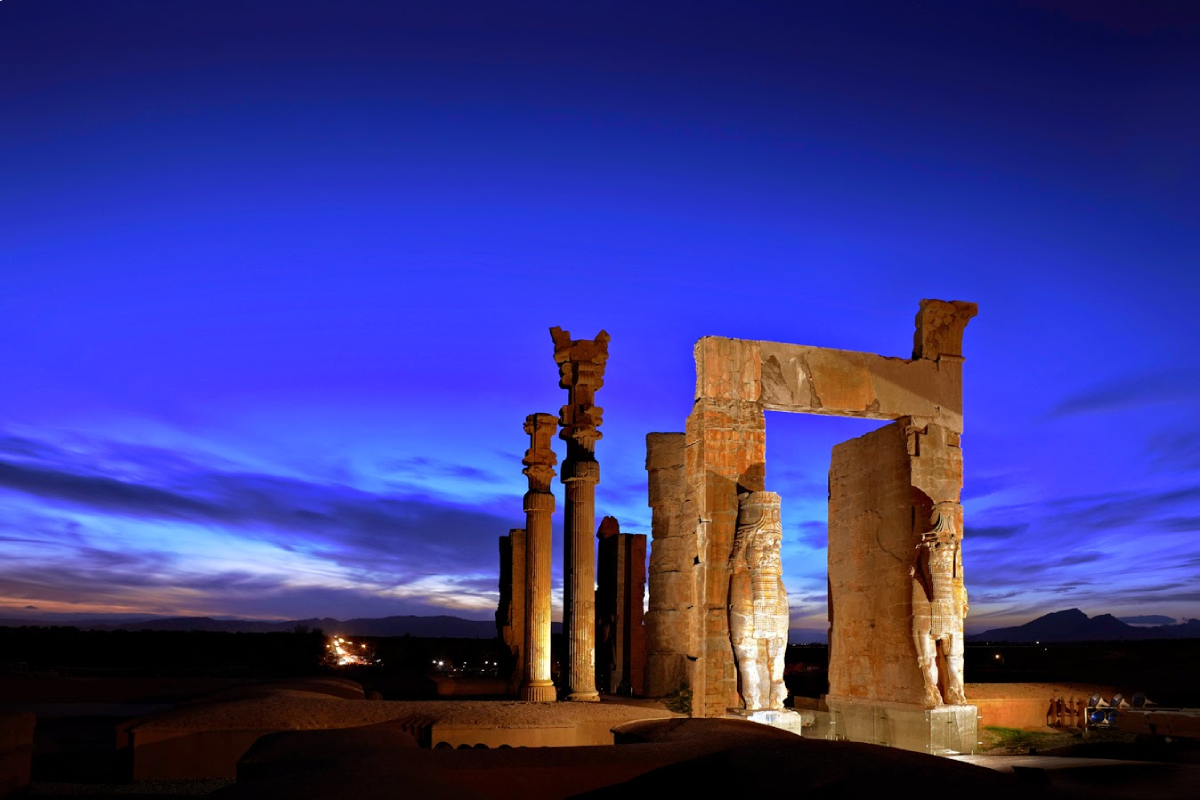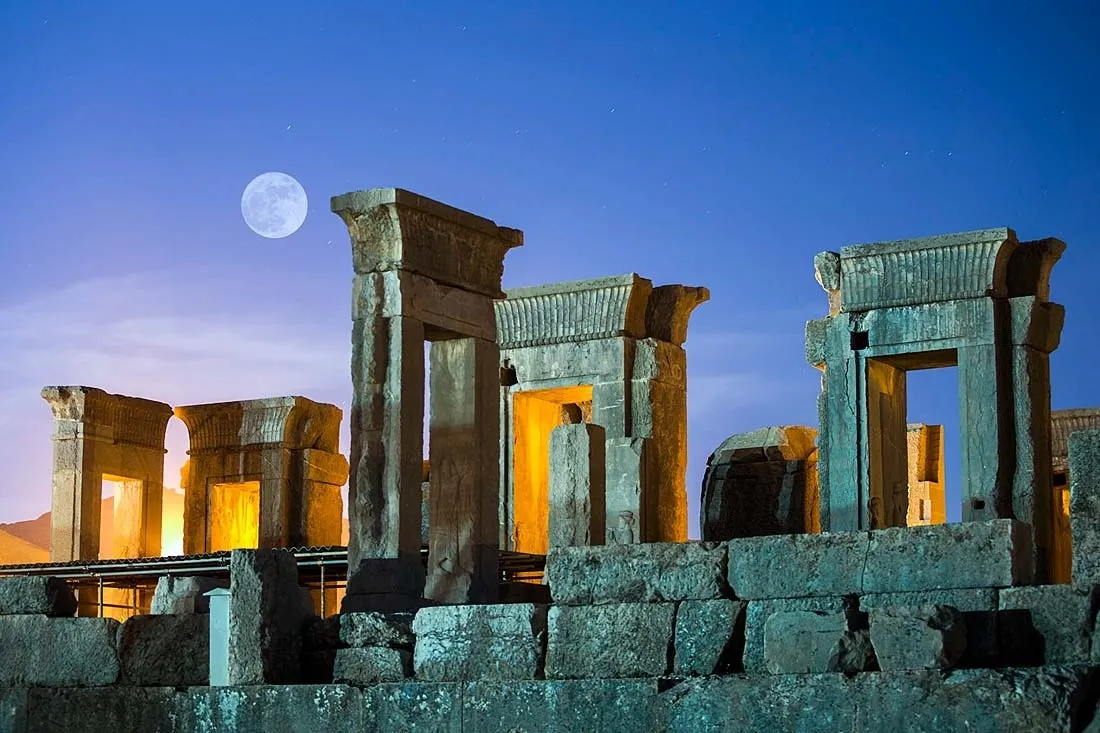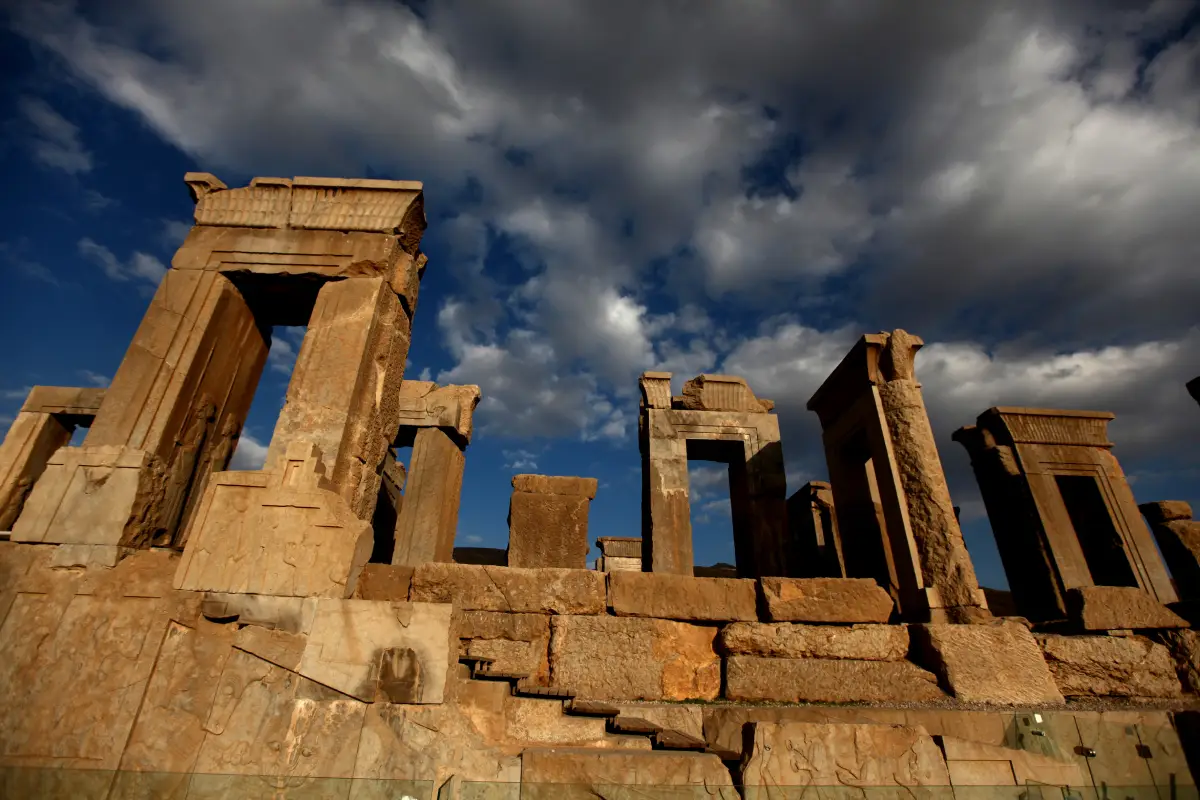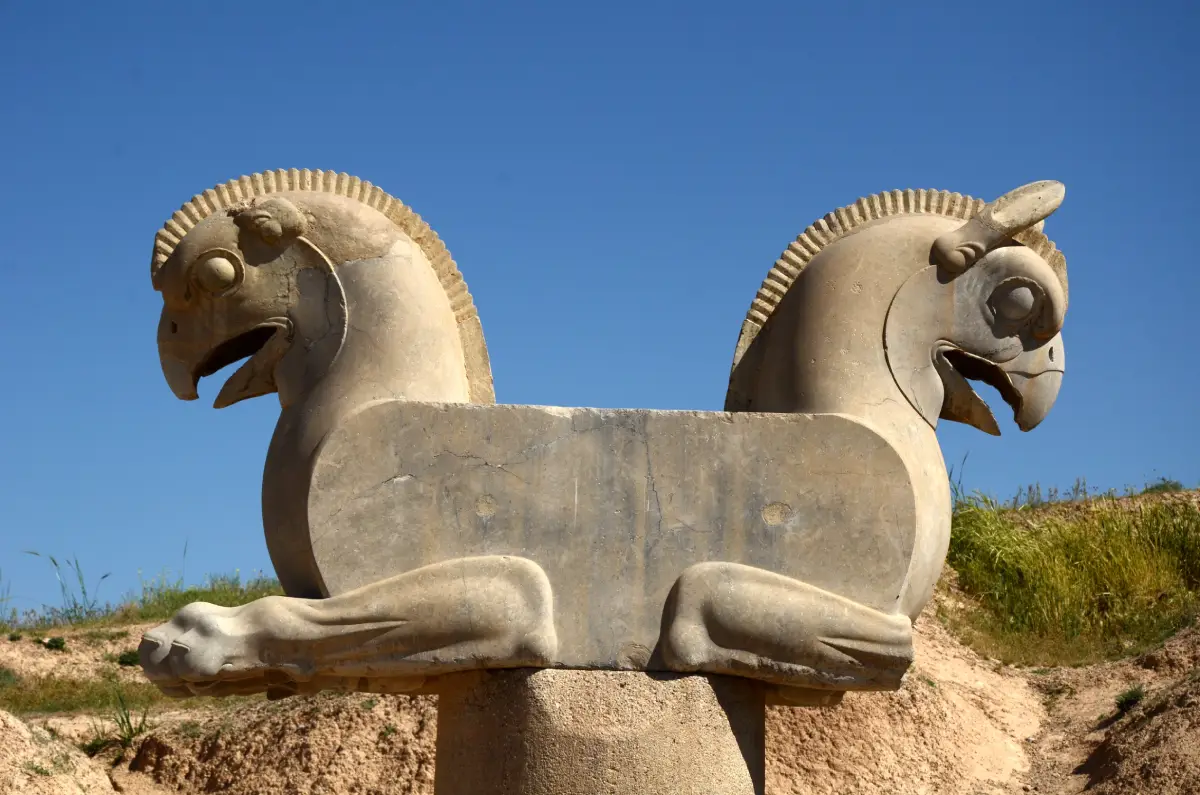Persepolis, also known as Takht-e Jamshid, was the grand ceremonial capital of the Achaemenid Empire. Located in Iran’s Marvdasht plains, Fars Province, surrounded by the southern Zagros Mountains, Persepolis holds a significant place in history. It has been recognized as one of Iran’s key cultural heritage sites and has been a UNESCO World Heritage Site since 1979.
Dating back to 515 BC, Persepolis was a major center for the empire. It housed a palace complex and citadel, showcasing Achaemenid architecture. However, Alexander the Great’s army conquered it in 330 BC, resulting in the destruction of its wooden parts by fire. Persepolis’s exact function remains uncertain. It wasn’t the empire’s largest city but served as a grand ceremonial complex. It likely hosted seasonal celebrations like Nowruz, the Persian New Year. Visitors can marvel at its halls and entrances, pondering the king’s private quarters’ location and the meaning behind its reliefs.

Do you want to visit Takht-e Jamshid?
Visit Our Iran will get you whatever you want. Email us at [email protected] or contact us through Whatsapp icon at the botton right of the page.
From Then to Now: Persepolis through the Ages
Persepolis, located at the foot of Kuh-e Rahmat (Mountain of Mercy) in southwestern Iran, is an archaeological marvel. Renowned for its architectural brilliance, urban planning, and art, it reflects the grandeur of the Achaemenid (Persian) Empire. The city’s vast terrace was initiated around 518 BCE by Darius the Great, hosting magnificent palatial buildings like the Apadana Palace and the Hundred-Column Hall.
Drawing inspiration from Mesopotamian designs, successive Achaemenid kings, including Darius I, Xerxes I, and Artaxerxes I, constructed an imposing complex on a colossal terrace. This ensemble of monumental stairways, throne rooms, and reception halls ranks among the world’s greatest archaeological sites. The terrace’s grandeur is accentuated by sculpted friezes, monumental gateways, and colossal winged bulls, showcasing Achaemenid architectural mastery.
Persepolis was the administrative hub of the Achaemenid Empire, yet its primary function was as a showplace for royal receptions and festivals. It symbolized the monarchy’s magnificence, with depictions of kings adorning its walls. The site continues to resonate with the legacy of ancient civilization, embodying the enduring spirit of a bygone era.

The city’s name, Persepolis, derives from the Greek term “Persepolis,” meaning “the Persian city.” To the ancient Persians, it was known as Parsa, reflecting its significance as a regional center. Over time, it also gained monikers like Takht-e Jamshid, meaning “Throne of Jamshid,” and Chehel Menar, translated as “Forty Minarets.”
Persepolis’s geographical setting near the Pulvar River, with its terrace leaning against Rahmat Mountain, adds to its allure. Despite its ancient origins dating back to 515 BC, Persepolis faced destruction at the hands of Alexander the Great’s army in 330 BC. The city’s burning, whether accidental or deliberate, marked a significant turning point in its history, leading to its eventual decline.
Persepolis gradually faded into obscurity in the centuries following the fall of the Achaemenid Empire. Nearby Estakhr emerged as a prominent city, utilizing Persepolis’s ruins for its own development. However, the significance of Estakhr waned over time after the Arab invasion of Iran, eventually succumbing to the rise of Shiraz as a new metropolis.
Persepolis, with its rich history and architectural splendor, represents the enduring legacy of ancient Persia. Despite the passage of time, it continues to captivate visitors, offering glimpses into a bygone era of opulence and power.

Discover more about Shiraz: The Heartland of Culture and History in Iran
Archeology of Persepolis
Persepolis’s archaeological exploration unveils a saga of construction spanning generations of Achaemenid rulers. Initiated under Darius I around 518 BC, the project endured over a century, witnessing contributions from subsequent kings like Xerxes I and Artaxerxes I. Quarried stones from Rahmat Mountain formed the foundation, providing sturdy material for the palatial complex’s construction.
Utilizing various limestone hues, monolithic blocks, and meticulous craftsmanship, Persepolis emerged as an architectural marvel. Intricate designs adorned its structures, with soldiers and dignitaries depicted repetitively in bas-reliefs. The purpose of Persepolis was twofold: as a treasury for the empire’s wealth and a majestic venue for imperial ceremonies and receptions.
The palaces of Persepolis, characterized by square central halls surrounded by columns, exemplify architectural ingenuity. Massive stone columns, some towering up to 20 meters, adorned with lion or bull motifs, dotted the complex. Porticos, distinguished by crown-shaped lintels and curved ridges, added to its grandeur, while four-stepped merlons flanked stairways, evoking significance akin to Darius I’s crown at Bistun Mountain.
Bas-reliefs depicted a spectrum of figures, from officers and soldiers to foreign representatives and the emperor himself. The entrance stairway, flanked by crenelated parapets, led to the Gate of Nations, a monumental hall adorned with inscriptions in cuneiform script. The Apadana palace, a sprawling audience hall, hosted imperial receptions boasting towering columns and terraces.
The Hadish Palace, attributed to Xerxes, featured bas-reliefs of the king under a royal sunshade, while the Tachar Palace, known as the “mirror hall,” reflected Darius’s opulence. The Hundred Columns Palace, with its vast assembly hall, and the Three Doors Palace, linked by corridors, added to the ensemble’s splendor.
The Inner Court, often labeled a harem, boasted a secluded design, indicating restricted access. Today, Persepolis stands as a testament to ancient Persian grandeur, its ruins bearing witness to a civilization’s remarkable architectural achievements and enduring legacy.
Every corner of this archaeological marvel tells a story of power, prestige, and architectural brilliance, from the monumental palaces to the intricate bas-reliefs. As you walk among the ruins, you can’t help but feel a sense of awe and wonder at the enduring legacy of Persepolis, a good representation of the greatness of the Achaemenid rulers and their timeless achievements in building one of the world’s most magnificent cities.

Explore Takht-e Jamshid with Visit Our Iran
Persepolis, a UNESCO World Heritage Site, showcases the remarkable achievements of ancient Persian civilization. As the seat of Achaemenid power, it witnessed lavish imperial receptions and ceremonies. Visiting Persepolis allows you to immerse yourself in the rich history and cultural legacy of Iran, offering a glimpse into the opulence and grandeur of one of the world’s greatest ancient civilizations.
If you’re interested in more exploration and discovery, why not consider joining us on a tour of Iran? Our comprehensive packages cover everything from flights to hotels to visas, ensuring a seamless and hassle-free travel experience. Whether you’re drawn to Persepolis’s ancient wonders or modern-day Iran’s vibrant culture, our tours have something for everyone.
So why wait? Plan your next adventure with Visit Our Iran and uncover the treasures of this captivating country. Contact us today to learn more about our exciting tour packages and start planning the trip of a lifetime.
